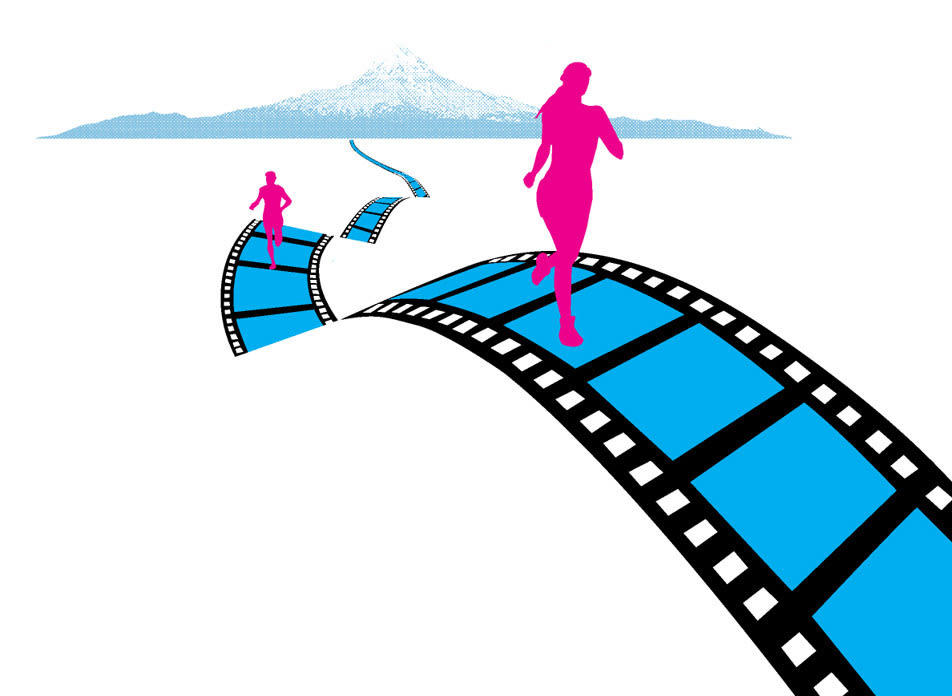Relay to Reel

Image: Michael Novak
SWEAT. INSOMNIA. Body paint. Nudity. Pre-dawn handoffs deep in the mountains. Anyone who has experienced Hood to Coast, the legendary annual relay in which 1,000 teams of 12 runners pound their bodies from Timberline Lodge to Seaside, knows the race is as much about crazy antics and insane logistics as endurance. So imagine filming the thing. Hood to Coast, a vivid documentary playing at 350 theaters nationwide in a one-night January 11 debut, portrays the race’s ordeal—the pain, humor, surrealism, and stunning landscape—by tracking four teams. As director-producer Christoph Baaden recalls, “If we would’ve known how much work it would be, it would probably never have happened.”
Phase I
Fundraising
Baaden chose Hood to Coast as his first feature subject after he ran the race in 2007 with his wife (and co-producer), Anna Campbell. The budget, Campbell says, “was less than $1 million … but not tons less.” The filmmakers got lucky with two Tualatin investors and more than 20 other private backers, all from Oregon. They hit their minimum budget the day before their own deadline—about a month before the race.
Phase II
Planning
The filmmakers contacted all 1,000 teams, conducted phone interviews with 200, then met with about 50, all from the Portland area. Baaden locked in his final four just one week before the race, choosing teams he thought embodied the relay’s spirit, from the marathoner who had suffered a heart attack on the course the year before to a cluster of animators from Laika, none of whom had ever run more than three miles.
Phase III
The Team
Hood to Coast 2008 overlapped with both the Democratic National Convention and the Beijing Olympics, leaving crews and equipment in short supply. The filmmakers corralled 60 Oregonians and hired 40 Los Angelinos over the phone. A helicopter pilot and cameraman, working in Oregon filming Ax Men, a logging reality show, signed on to shoot the race with the same hi-def aerial camera model used on Discovery Channel’s Planet Earth series.
Phase IV
Race Day
Baaden and co-director Marcie Hume deployed four camera crews for each team—one embedded in the team’s van, one trailing both van and runners in a golf cart, two along the course. Like the runners, the documentary’s teams had to switch duties in the course of the race—twice in the middle of the night on unmarked gravel roads. “We had people who had shot on The Amazing Race, but they had never seen anything this complicated,” Baaden says. When his crew missed a nighttime exchange, Baaden himself ran nearly two miles alongside a subject, lugging a camera on his shoulder.
Phase V
Recovery
Then came the scary moment all filmmakers know, when the footage had been shot but no one had seen it. “I just kept thinking,” Baaden recalls, “do we have a movie in there?” Fortunately, the answer was yes.



